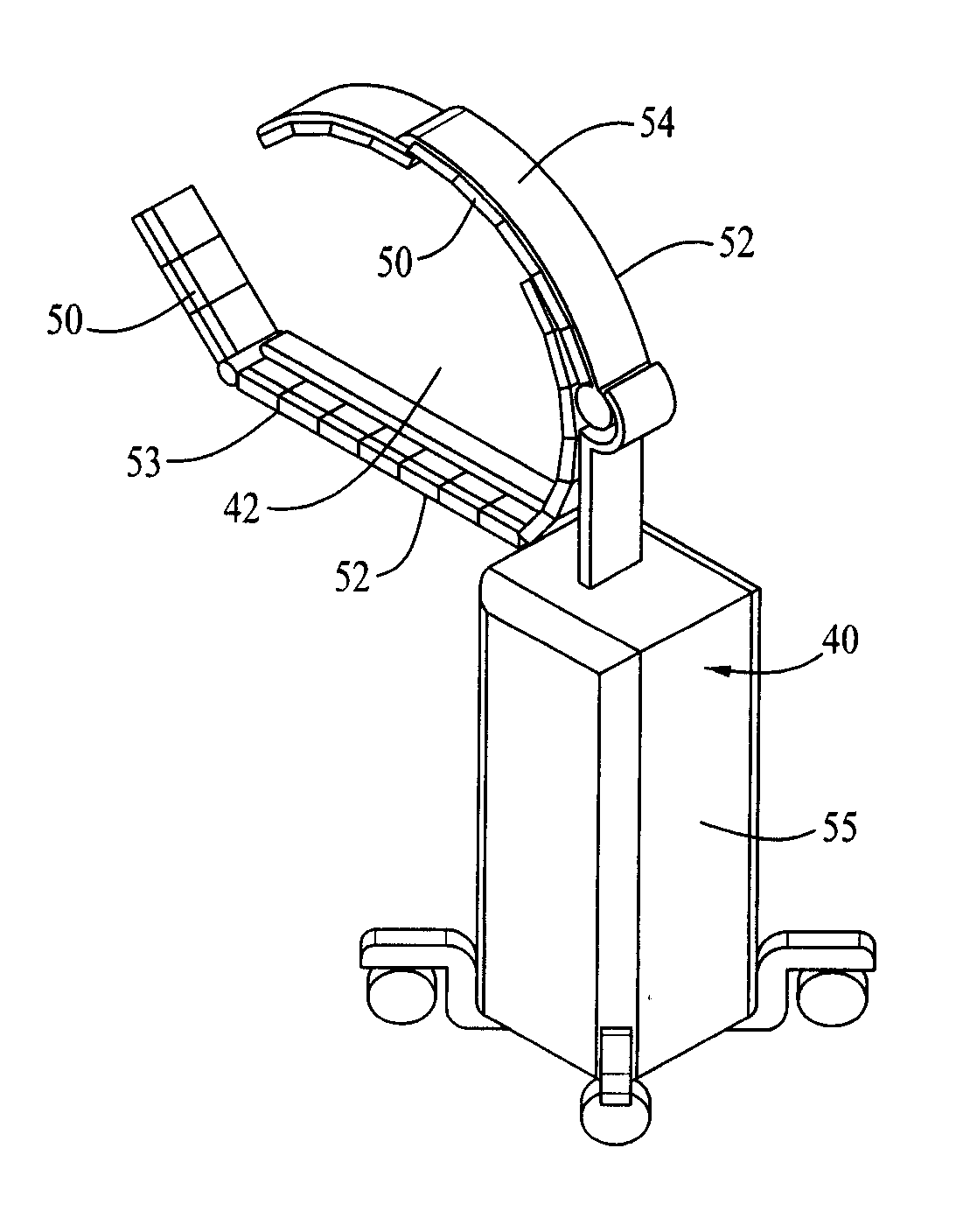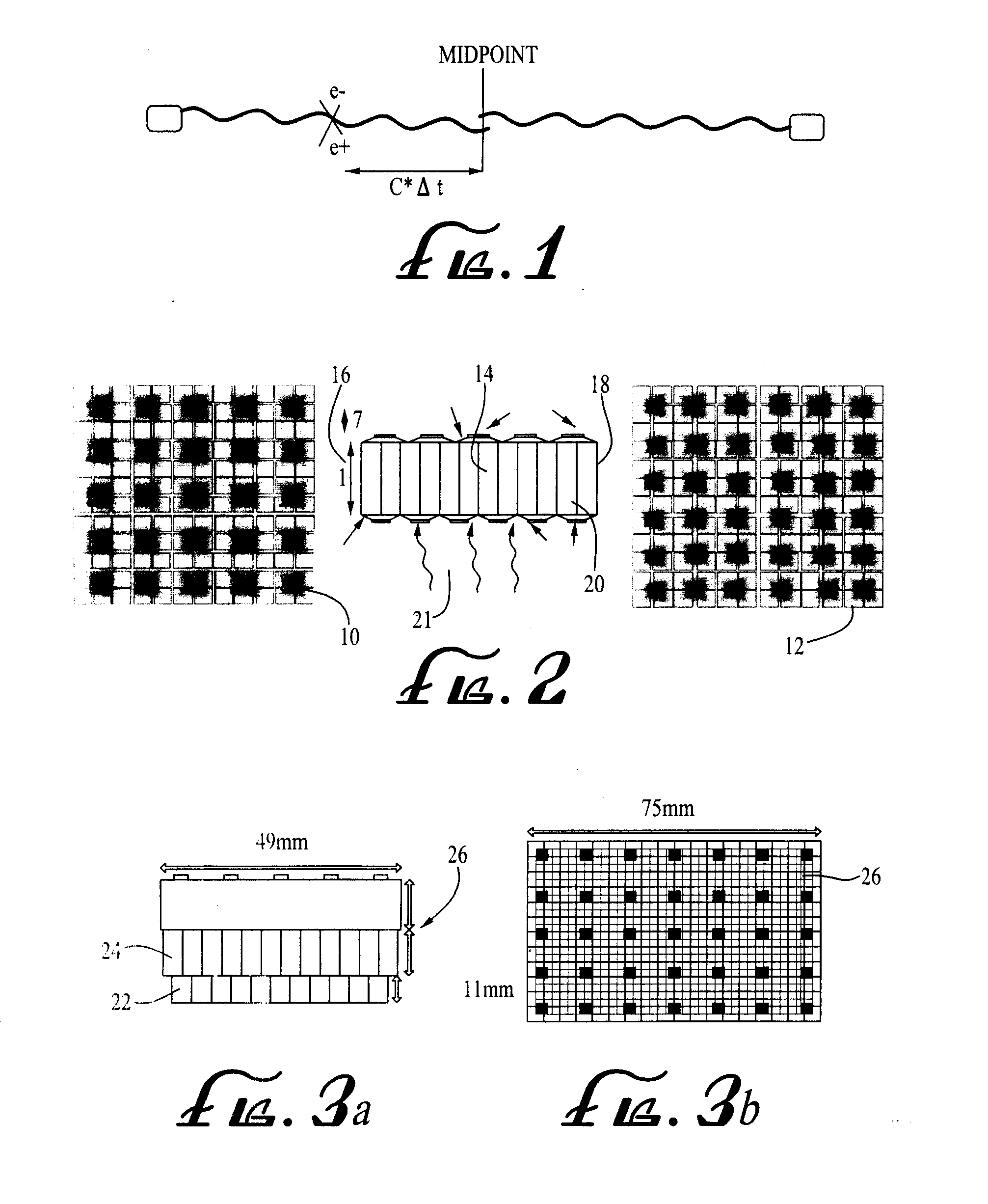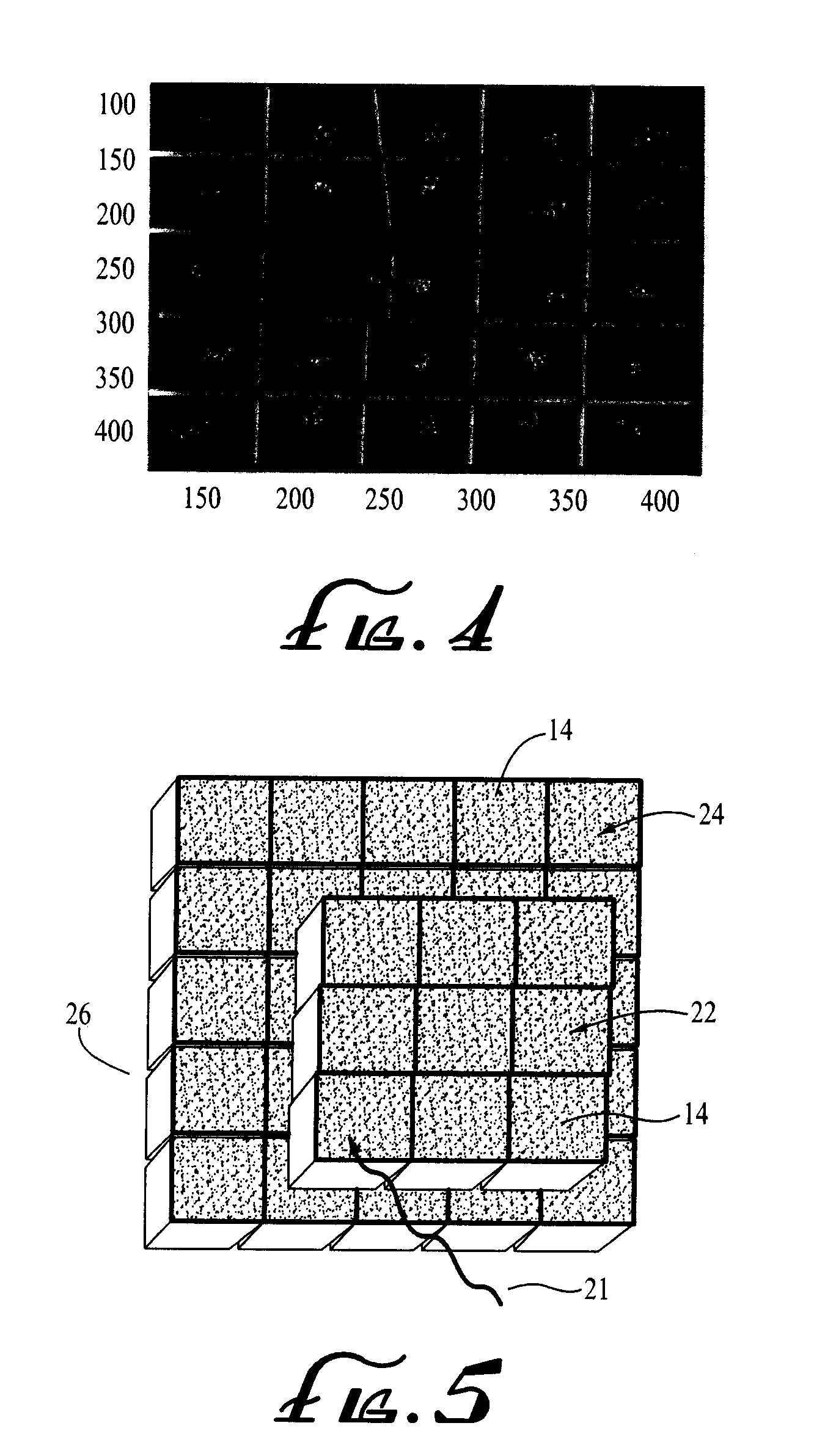Portable pet scanner for imaging of a portion of the body
a scanner and portability technology, applied in tomography, instruments, x/gamma/cosmic radiation measurement, etc., can solve the problems of spatial resolution degradation, higher cost, identification error,
- Summary
- Abstract
- Description
- Claims
- Application Information
AI Technical Summary
Problems solved by technology
Method used
Image
Examples
first embodiment
[0057]FIG. 9 shows one embodiment of a mobile PET scanner 40 incorporating features of the invention. The detector blocks 50 in the embodiment shown are 8 cm long, and 1.6 cm thick. The frame 52 that supports the blocks are stainless steel 3 mm thick. The upper portion 54 slides to open and close the patient enclosing space 42 defined by the surrounding detector blocks 50. The cart is designed as a mobile PET unit and is adjustable so that the bottom frame 53 with detector blocks 50 of the PET unit can be fit through a gap or space 66 below a patient 72 placed on an operating table 70, such as shown by the arrow 56 in FIGS. 10 and 11.
Placement of the Detector Inside the Gap in the Operating Room Table
[0058]All clinical PET scanners are based on the use of photomultiplier tubes, which are relatively large (several centimeters). Because Solid-State Photo-Multipliers (SSPM) have dimensions of only a few millimeters, it is now possible to build a PET scanner with detectors that can fit ...
second embodiment
[0066]A “spot-PET scanner” is proposed to provide PET images of a portion of the body in the operating room. These further embodiments of the detector design for a PET scanner for spot imaging, are based on fast SiPM or Digital Photon Counter—DPC, and the Ca-dopped LSO scintillator that enable “time-of-flight assisted limited-angle tomography”. The theory of the “time-of-flight assisted limited-angle tomography” was simulated for a dedicated breast imaging system (ref. Karp et al. 2009).
[0067]We performed simulations to determine if a time-of-flight assisted, limited-angle tomography Spot-PET could obtain images of a torso-sized object that were comparable to those generated by commercial PET scanners. Simulations were performed with GRAY (P. Olcott, S. Buss, C. Levin, G. Pratx, and C. Sramek, “GRAY: High Energy Photon Ray Tracer for PET Applications,” Nuclear Science Symposium Conference Record, 2006. IEEE, vol. 4, 2006, pp. 2011-2015), an in house fast Monte Carlo package for simu...
PUM
 Login to View More
Login to View More Abstract
Description
Claims
Application Information
 Login to View More
Login to View More - R&D
- Intellectual Property
- Life Sciences
- Materials
- Tech Scout
- Unparalleled Data Quality
- Higher Quality Content
- 60% Fewer Hallucinations
Browse by: Latest US Patents, China's latest patents, Technical Efficacy Thesaurus, Application Domain, Technology Topic, Popular Technical Reports.
© 2025 PatSnap. All rights reserved.Legal|Privacy policy|Modern Slavery Act Transparency Statement|Sitemap|About US| Contact US: help@patsnap.com



